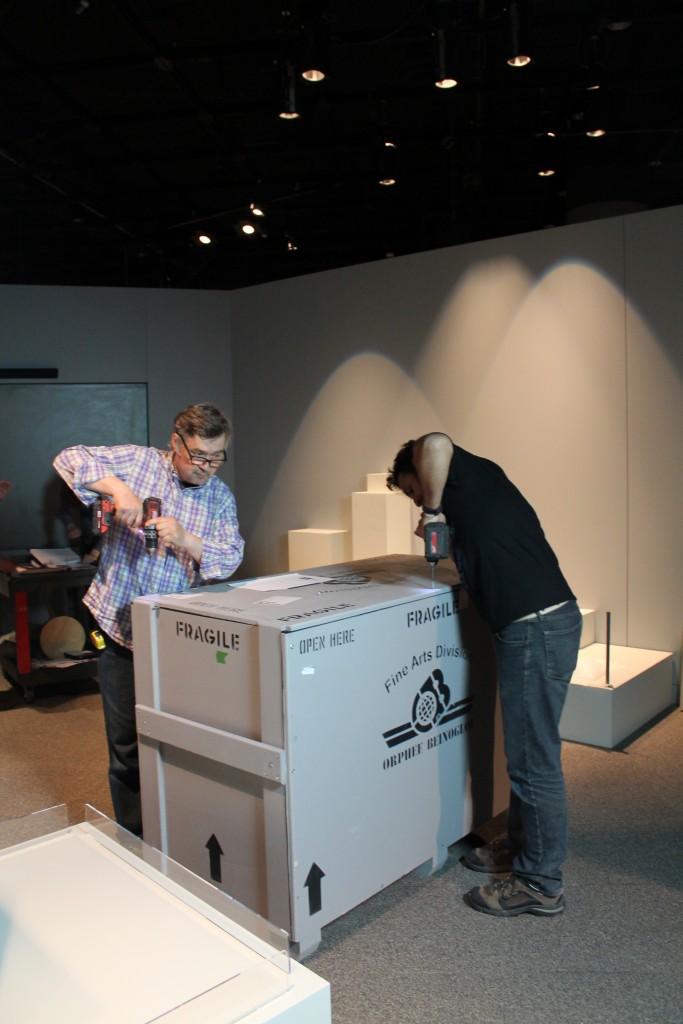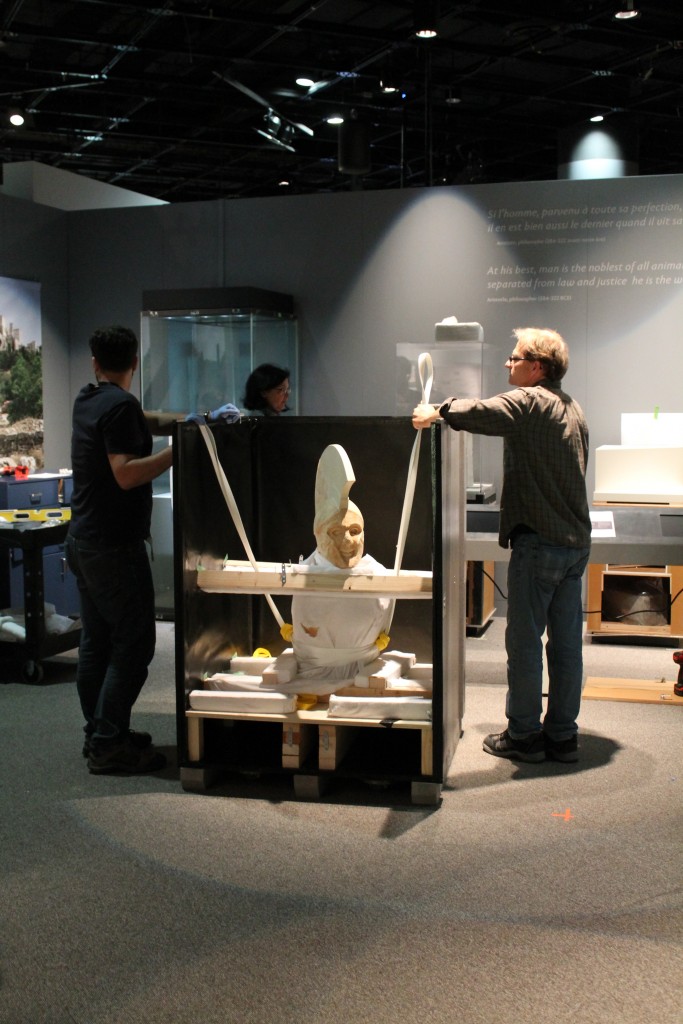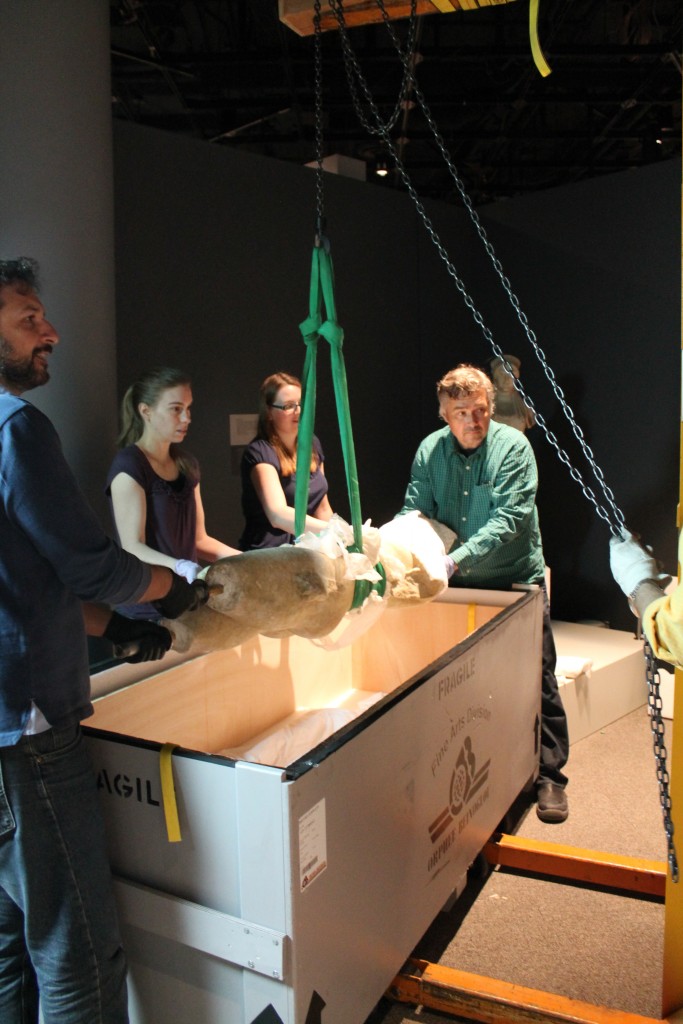The Art of Moving Art
If you thought planning a family vacation was complicated, just imagine the work involved in getting more than 500 objects from 21 Greek museums to Canada.
That was just a small part of the behind-the-scenes work involved in producing The Greeks – Agamemnon to Alexander the Great, a special exhibition on Ancient Greece presented at the Canadian Museum of History from June to October 2015.

The precious Greek objects travelled in their shipping crates to facilitate safe movement. Canadian Museum of History, photo K. Davis, 2015
To bring the exhibition’s priceless objects to Canada, the Museum worked closely with PACART, a transportation company that specializes in the secure movement of art and antiques. PACART, one of the sponsors of the exhibition, worked tirelessly to transport the artifacts to Canada, while also handling the logistics associated with getting the objects off the plane and into each of the presenting museums in North America. Given that the objects — many of which are national treasures — were to be imported into Canada, then moved to four different locations over the span of several months, arranging everything was no small feat.

Exhibition preparators carefully place a marble sculpture of a hoplite in its shipping crate. Canadian Museum of History, photo K. Davis, 2015
Movement of the objects involved four cargo shipments from Greece to Canada, and one hand-carried shipment: a case with its own seat on the plane.
Upon arrival in Canada, the couriers who accompanied the artifacts from Greece were met by a member of the PACART team and escorted to the cargo warehouse to observe as the crates were unloaded and opened. The objects were then safely transferred to PACART trucks and strapped in for the ride to Pointe-à-Callière, Montréal Archaeology and History Complex: a member of the exhibition consortium and the first stop on the exhibition’s North American tour.
First-class service for these priceless artifacts extended well beyond the airport’s loading docks. Just as a visiting dignitary would be given a security detail, the artifacts travelled to the venue in style, under the watchful eye of Greek couriers, with armed security always in close proximity.

A marble sculpture is lifted from its shipping crate into a display case. Canadian Museum of History, photo K. Davis, 2015
In addition to overseeing physical considerations, PACART assisted with the logistical aspects of transporting these objects across national borders. Moving items of such historical significance requires hours of legwork to complete the paperwork for customs clearance. All items need to be accounted for on paper each time they move across a border. Think of it as a very lengthy passport-and-visa application!
The art of moving art is not always simple. With more than 40 years’ knowledge and experience, however, PACART was an ideal choice when it came to overseeing the safety and security of the priceless objects displayed in the exhibition.
But the job is only half-done. After closing at the Canadian Museum of History on October 12, the exhibition will head to its next venue. PACART will once again be moving the Greek treasures, this time to The Field Museum in Chicago, where the exhibition opens in November.
This means that there are only a few days for you to take in The Greeks – Agamemnon to Alexander the Great at the Canadian Museum of History. This is a once-in-a-lifetime exhibition, so make sure to see it before these priceless objects begin the next leg of their journey.